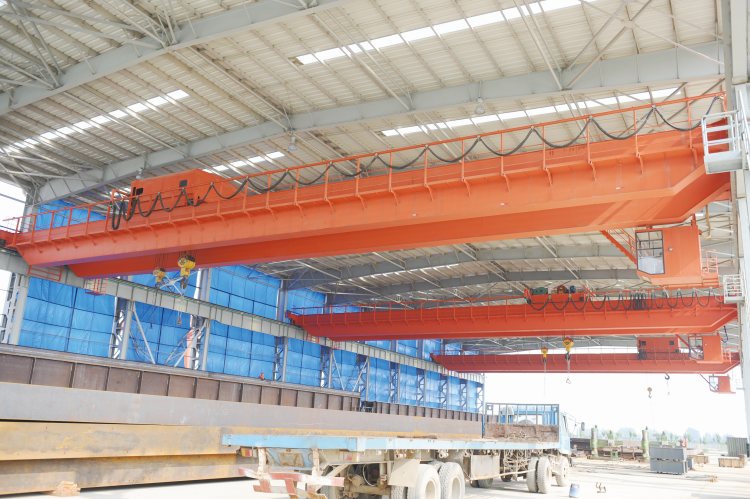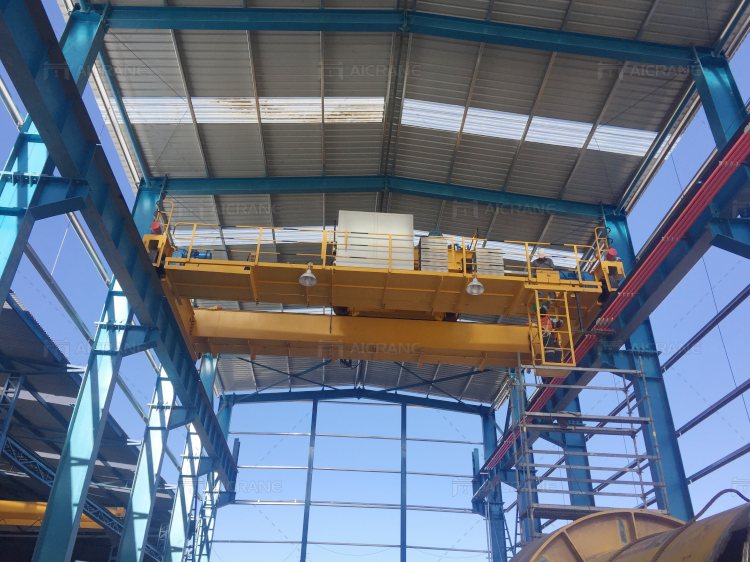In the landscape of heavy lifting operations, overhead cranes stand as indispensable assets, facilitating the movement of heavy loads with precision and efficiency. Among the diverse range of overhead cranes available, the 50 ton overhead crane represents a pinnacle of strength and capability, catering to the demands of various industries. In this article, we delve into the price range of 50 ton overhead cranes, exploring factors that influence costs, assessing affordability, and understanding the value proposition they offer to businesses.
Functionality of 50 Ton Overhead Cranes
50-ton overhead cranes are engineered to handle substantial loads in industrial environments, offering exceptional lifting capacity and precision control. These overhead bridge cranes feature robust structural components, powerful hoisting mechanisms, and advanced control systems, making them ideal for applications such as manufacturing, construction, logistics, and heavy industry.

The versatility of 50-ton overhead cranes allows them to perform a wide range of lifting tasks, from moving machinery and equipment within manufacturing facilities to loading and unloading cargo in distribution centers and ports. Their ability to traverse overhead rails provides flexibility in maneuvering within confined spaces, optimizing workspace utilization and streamlining material handling operations.
Factors Influencing the Price Range
The 50 ton overhead crane price is influenced by various factors, each contributing to the overall cost of acquisition and ownership. Some key factors include:
Lifting Capacity: The lifting capacity of the crane is a primary determinant of its price. A 50-ton overhead crane, capable of lifting heavy loads, typically commands a higher price compared to cranes with lower lifting capacities.
Span and Height: The span and height of the crane define its coverage area and lifting height. Cranes with longer spans and higher lifting heights require larger structural components and more powerful mechanisms, resulting in higher costs.
Hoisting Mechanism: The type and configuration of the hoisting mechanism, including wire rope hoists or chain hoists, influence the overall cost of the crane. Advanced hoisting systems with increased speed and precision may incur additional expenses.
Control Systems: The sophistication of the control systems, including manual, semi-automated, or fully automated controls, can impact the price of the crane. Advanced control features such as variable frequency drives (VFDs) and remote monitoring capabilities may add to the cost.
Installation and Maintenance: Installation expenses, including site preparation, assembly, and commissioning, contribute to the total cost of acquiring a 50-ton overhead crane. Additionally, ongoing maintenance and service requirements should be considered for long-term cost projections.

Assessing Affordability and Value Proposition
While the initial cost of acquiring a 50-ton overhead crane may seem significant, it is essential to evaluate its affordability in the context of its long-term value proposition. These cranes offer several advantages that justify their investment:
Increased Productivity: 50-ton overhead cranes streamline material handling processes, reducing manual labor and minimizing downtime. Their ability to lift heavy loads efficiently enhances productivity and throughput in industrial operations.
Improved Safety: Overhead cranes provide a safer alternative to manual lifting methods, reducing the risk of accidents and injuries associated with heavy lifting tasks. Advanced safety features such as overload protection and collision avoidance systems further enhance workplace safety.
Enhanced Efficiency: The precise control and maneuverability of overhead cranes optimize workflow processes, enabling faster turnaround times and improved operational efficiency. By minimizing handling times and maximizing uptime, these cranes contribute to overall cost savings and profitability.
Long-Term Durability: Well-maintained 50-ton overhead cranes are built to withstand rigorous industrial environments, offering long-term reliability and durability. Their robust construction and high-quality components ensure years of dependable service, minimizing the need for frequent replacements or repairs. 50 ton overhead cranes are generally double girder bridge cranes due to their large load capacity.
Investing in Excellence
In conclusion, the price range of 50-ton overhead cranes reflects the value they bring to industrial operations. While the initial investment may vary based on factors such as lifting capacity, span, and control systems, the long-term benefits of enhanced productivity, safety, and efficiency justify their acquisition.
Businesses seeking to optimize material handling processes and improve operational performance can find affordable excellence in 50-ton overhead cranes. By evaluating the total cost of ownership and assessing the value proposition they offer, companies can make informed decisions that align with their operational needs and strategic objectives.
Investing in a 50-ton overhead crane represents more than just acquiring equipment; it is a commitment to excellence, innovation, and operational efficiency. With the right crane solution in place, businesses can navigate the challenges of modern industry with confidence and achieve new heights of success.